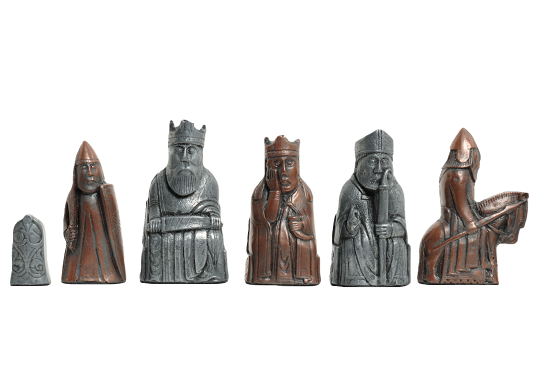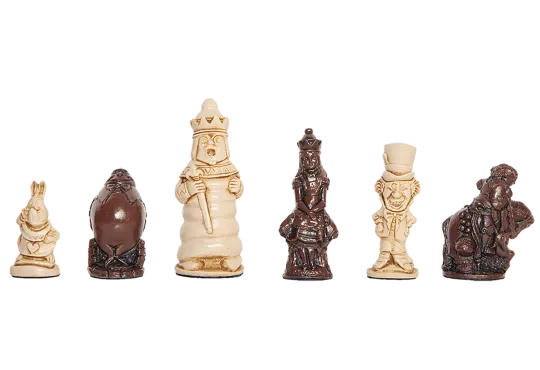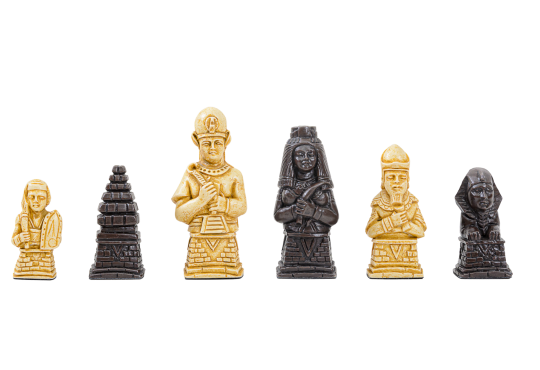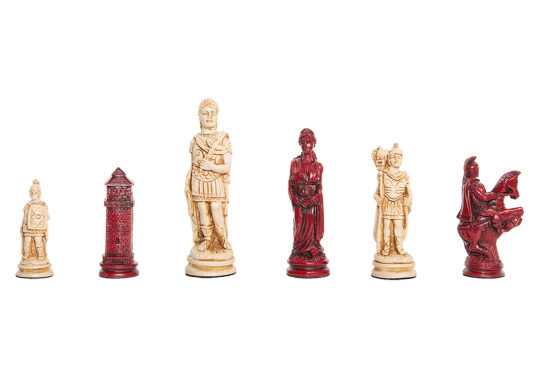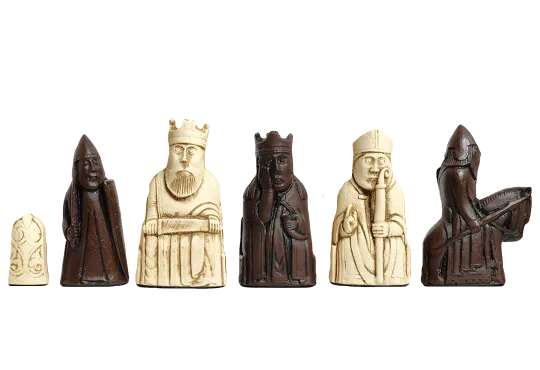The Lewis Chess Pieces Everything You Need To Know
One fine day, you are walking along a lonely shoreline of Scotland. You discover an artifact from another era - sounds straight out of a novel, right? You might be surprised to know that this is what may have happened in 1831 with the discovery of the Lewis chess pieces. These mysterious, beautifully crafted antiques aren't just relics; they're keys to a forgotten past steeped in legend and history. This discovery sparked countless studies and theories about how these relics ended up on a remote Scottish island. So, let’s dive into the fascinating story of the Lewis Chess pieces.

Table of contents
The Discovery of the Lewis Chessmen
The Lewis Chess pieces are arguably one of the most famous treasures ever found. They were first discovered in 1831 on the Isle of Lewis in Scotland. However, despite multiple efforts, very little is known about why the chessmen were hidden and who exactly found them.
However, you will find several myths and rumors surrounding their origins.
One of the most common stories claims that a local crofter named Malcolm MacLead came across a sandbank on the Uig Bay beach and discovered a stone chamber underneath the sand that housed the precious chess pieces.
-
 Free Worldwide Shipping
The Mini Isle of Lewis Series Chess Pieces - 2.0" King - Brown and Natural
Free Worldwide Shipping
The Mini Isle of Lewis Series Chess Pieces - 2.0" King - Brown and NaturalStarting at $149.00
To $567.95
-
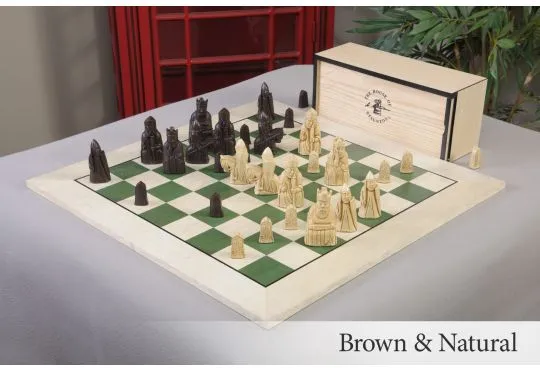 Free Worldwide Shipping
The Isle of Lewis Chess Set, Box, & Board Combination Enjoy Savings of 32% Off MSRP When Purchased as a Combination
Free Worldwide Shipping
The Isle of Lewis Chess Set, Box, & Board Combination Enjoy Savings of 32% Off MSRP When Purchased as a Combination$597.95
Starting at $409.00
To $518.95
However, other stories claim a highlander stumbled upon them one day. He mistook them for elves, and ran away in horror. He later came back to retrieve them after at his wife's urging. You may have even heard about the tales of how shipwreck survivors buried their treasures, which contained the chessmen they had salvaged from the wreck but could never return for.
Nevertheless, these tales have one common element: They were found in Uig.
Over the years, they have garnered worldwide recognition and fascinated art historians. Who praise their Romanesque Art - an art style widespread throughout Europe in the twelfth century.
A Deeper Dive into the Origins of the Lewis Chessmen
The Lewis chess pieces are said to have originated in Scandinavia. They consist of 78 intricately carved figurines. Scholars believe that the pieces originate in Norway around the 12th or 13th century. When the Vikings ruled the seas. There is a strong possibility that they then made their way to the Hebrides. An archipelago that includes the Isle of Lewis, by Norse settlers or traders.
Every piece in the chess set reflects the Norse culture from regal kings and queens, powerful warriors to pensive bishops.
A deeper dive into the craftsmanship revealed a feature of the Lewis Chessmen that could not have originated anywhere else but Scandinavia. The rooks, or "warders," are shown biting their shields - this action is believed to indicate that these men were berserkers. These feared warriors bit their shields to wind themselves up int a fighting rage.

Recently, a few historians have also speculated that the chess set may have belonged to Olaf or Rognvald, local rulers in the medieval kingdom of Isles. This makes us wonder if these chess pieces were once prized possessions of a Viking chieftain.
The Lewis Chessmen Unmasked, a publication by the National Museums Scotland, discusses this theory in great detail. They have shared a few insights on how the chessmen could have been a gift from a Norwegian king to the local rulers to strengthen the ties between the Isles and Norway.
Another fascinating theory suggests that the set was the property of a wealthy merchant traveling through the Hebrides. The merchant hid the pieces with plans to return and retrieve them later but failed to do so.
Behind the Intricate Craftmanship of the Lewis Chess Pieces
We found a brilliant study by the National Museum in Scotland where the scholars thoroughly examined in their possession. The researcher who participated in this study examined the surface condition of each piece to determine and possibly uncover some of their mysteries.
They used special-grade microscopes to magnify and inspect the chess pieces. They found that most pieces were walrus ivory and whale tooth.
You can picture just how detailed their research was. They used different specimens, ranging from hippo ivory to whale teeth, to compare and discover what the Lewis Chess Pieces were made of. However, the material used for the knight piece seemed to be the only one made of whale ivory.
We dug a little deeper and found they used fluorescent X-rays to map what of type of tools were used to carve the designs.

Not only did they find fine chisel marks with slightly damaged cutting edges. But they also found that the chess pieces were carved using vibrating scrapping tools and cutting blades that left behind a sort of “chatter marks.”
Despite being lost for centuries, the Lewis chess pieces are in remarkably good condition. This suggests that they were made with a lot of care and may have been wrapped or stored in a leather bag for protection.
It makes us wonder if each piece was carved by an artisan who knew they were creating something historical.
The Myths and Rumors Surrounding the Lewis Chess Pieces
Did you know that there is a very strong theory out there that suggests that the Lewis chess pieces may have been carved by a woman sculptor?
Well, according to the Saga of Bishop Pall. The wife of a highly-regarded priest, Margret the Adroit, was said to be the most skilled carver in Iceland. The bishop regularly commissioned her to create walrus ivory gifts for his friends overseas.
If the rumor is true, it may explain how the chess pieces ended up in the Isle of Lewis, a highly frequented trading center.
Another popular theory was put forward in 2009 by Caroline Wilkinson, who specializes in facial reconstruction. She analyzed the faces of 59 chess pieces. Then made the claim that five different sculptors may have been involved in creating the Lewis Chessmen.
These theories and stories add yet another layer of mystery to an artifact that is still being studied by historians.

Why the Lewis Chess Pieces Still Matter Today
A recent sale at Sotheby’s auction house made headlines when a woman bought one of the original, missing pieces of the Lewis Chessmen for almost a million dollars.
As it turns out, the previous owner had no idea about the item’s value. Since their grandfather paid five pounds for the piece in the 1960's. This recent discovery and sale sparked a renewed interest in the Lewis chess pieces and Norse mythology as a whole.
The chess set is still very much loved and revered for its timeless artistry. It is admired for the skills of the medieval artists. They have become cultural symbols of Scotland and chess in general. They inspired the creation of the modern chess set and have appeared in various Hollywood films throughout the years.
Here’s an interesting fact: Did you know that the chess pieces featured in Harry Potter and the Sorcerer’s Stone are designed based on the Lewis Chessmen?
Whether you're a chess enthusiast or someone looking for exact replicas of the original to add to your collection, you can find them at the House of Staunton.
-
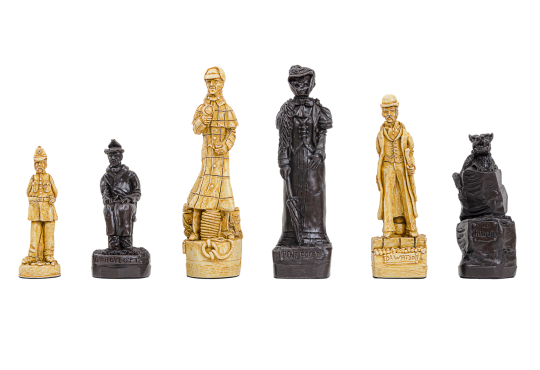 Free Worldwide Shipping
The Sherlock Holmes Series Chess Pieces - 5.95" King - Brown and Natural
Free Worldwide Shipping
The Sherlock Holmes Series Chess Pieces - 5.95" King - Brown and NaturalStarting at $349.00
To $1,183.95
-
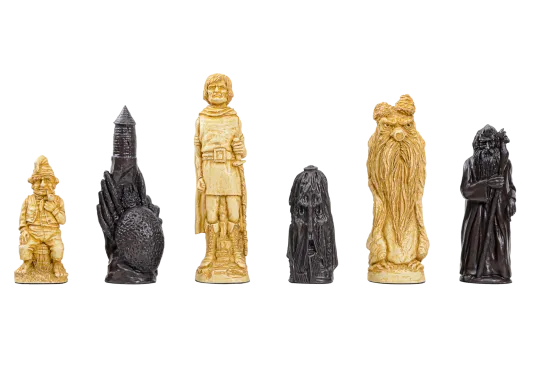 Free Worldwide Shipping
The Lord of the Rings Series Chess Pieces - 5.9" King - Brown and Natural
Free Worldwide Shipping
The Lord of the Rings Series Chess Pieces - 5.9" King - Brown and NaturalStarting at $379.00
To $1,213.95
Where Can You See the Lewis Chessmen?
The Lewis Chessmen are easily the most well-traveled objects in the British Museum collection. Since 1995, they have been featured in 20 exhibitions worldwide and witnessed by potentially millions of people.

As of now, the chess set is split between two locations. 82 pieces are in the British Museum in London, the remaining 11 are in the National Museum Scotland.
Both museums allow visitors, and you can see the iconic pieces up close and learn more about their legacy.
Final Thoughts
As you may have already grasped from this article. The Lewis chess pieces are timeless symbols that represent a rich culture and continue to inspire artists and media.
If you are just as fascinated as we are and want to experience their legacy firsthand. Why not add a beautifully crafted replica to your collection?
USCF Sales has a wide range of exquisite variations of the Lewis Chessmen. From sleek metallic finishings to antique glass pieces, that allow you to bring a piece of history into your home.


